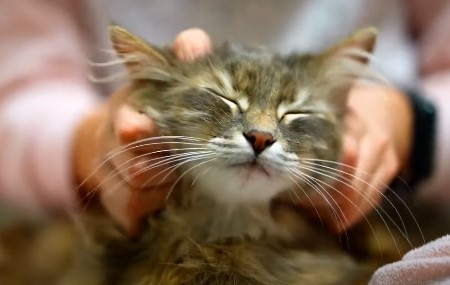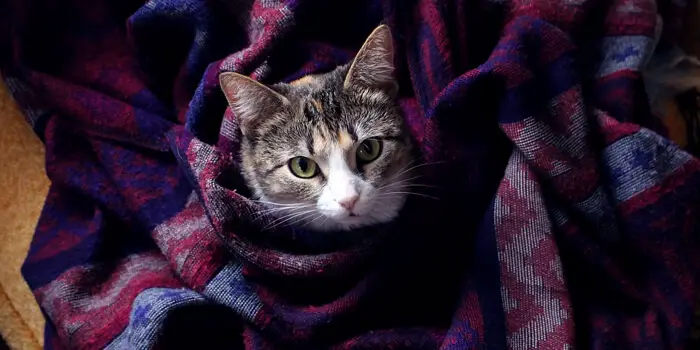Flaky fur got you scratching your head? Don’t worry, feline dandruff (or dry skin) has many causes. Dry weather, food allergies, parasites, or stress can all make Kitty look like a snow queen. Watch for itchy scratching, greasy patches, or hair loss alongside the flakes.
A vet visit can unravel the mystery, from a simple diet tweak to a soothing medicated bath, and get your purr machine back to sparkling! Remember, healthy skin means happy cat!
Is Dandruff on Cats Normal?
Occasional mild dandruff on cats can be normal, especially during seasonal changes or in response to environmental factors. However, persistent or severe dandruff may indicate an underlying issue.
Causes range from improper grooming, poor diet, or parasites to skin infections or allergies. Regular brushing, a balanced diet rich in omega-3 fatty acids, and maintaining a stress-free environment can help prevent dandruff.

If dandruff persists or is accompanied by other concerning symptoms such as excessive itching or hair loss, a vet visit is crucial for a proper diagnosis and tailored treatment plan. Monitoring your cat’s skin and coat health is essential for identifying and addressing potential issues promptly.
Why Do Cats Have Dandruff?
Dandruff is a common problem for cats, and it can be caused by a number of things.
- One common cause of feline dandruff is poor diet.
- One of the most common causes of dandruff is dry skin. If your cat’s skin is dry, it can cause the flakes to become more visible. You may also notice that your cat is scratching more than usual. This is because the itchiness associated with dry skin can be very uncomfortable.
- Cats who don’t consume enough nutrients or eat an unbalanced diet are more likely to develop dandruff. Make sure your cat is eating a healthy, nutritious diet to help prevent dandruff.
- Another possible cause of feline dandruff is allergies. Cats can be allergic to a variety of things in their environment, including certain foods, pollen, and even household cleaners.
Read: How to Wash a Cat Without Cat Shampoo
Why Does My Indoor Cat Have Dandruff?
Indoor cats are less likely to get the natural sunlight and fresh air that helps keep their skin hydrated. This can lead to dry skin and dandruff.
Indoor cats can also be allergic to dust mites, pollen, or other allergens that are found in the home. This can also cause dry skin and dandruff.
A diet that is low in essential fatty acids can also contribute to dry skin and dandruff.
Should I Worry About Cat Dandruff?
If your cat has dandruff, it is not necessarily a cause for concern. However, if the dandruff is accompanied by other symptoms, such as itching, hair loss, or redness, it could be a sign of a more serious condition.
Dandruff is caused by a variety of factors, including dry skin, allergies, and poor grooming. If your cat is healthy and has no other symptoms, you can try to improve their grooming habits and see if that helps.
Brush their fur regularly with a soft brush to help remove dead skin cells and promote circulation. Make sure they’re getting enough omega-3 fatty acids in their diet, as this can help improve skin health.
If dandruff persists, or if your cat has other symptoms, you should take them to the vet to rule out any underlying health problems.
Dandruff on Cats Back Near Tail
If your cat has dandruff that’s concentrated near the base of her tail, it could be a sign of an underlying health condition. Cats can develop dandruff for a variety of reasons, including allergies, poor nutrition, and stress.
If your cat’s dandruff is accompanied by other symptoms like excessive scratching or bald patches, make an appointment with your veterinarian to get to the bottom of the problem.
How Do You Get Rid of Cat Dandruff?
There are a few things you can do at home to help reduce your cat’s dandruff:

Balanced Diet
Start with providing your cat a well-balanced and high-quality diet. Look for cat foods that contain essential fatty acids like omega-3 and omega-6, which play a crucial role in maintaining healthy skin and a glossy coat.
Consult your veterinarian to determine the right diet for your cat’s specific needs.
Regular Grooming
help your cat groom by regularly brushing their coat. This not only removes loose fur but also stimulates oil production in the skin, preventing dryness. Opt for grooming tools suitable for your cat’s fur type, and be gentle to avoid causing any discomfort.
Hydration and Humidity
Ensure your cat has access to clean, fresh water at all times. Additionally, consider using a humidifier in your home, especially during dry seasons, to maintain proper humidity levels. This prevents the skin from drying out and reduces dandruff.
Specialized Shampoos
Use cat-friendly, moisturizing shampoos formulated to address dry skin. Avoid using human shampoos, as they can be too harsh for a cat’s sensitive skin. Bathe your cat only when necessary and be sure to rinse thoroughly.
Supplements
Consult your veterinarian about the possibility of providing supplements that promote healthy skin and coats. Omega-3 fatty acid supplements can be beneficial in reducing dandruff and enhancing overall skin health.
Flea Control
Regularly use veterinarian-recommended flea control products to prevent infestations. Fleas not only cause discomfort but can also lead to skin irritation and dandruff. Maintaining a flea-free environment is crucial.
Allergy Management
If you suspect allergies are causing your cat’s dandruff, consult your veterinarian. They can recommend hypoallergenic diets or perform tests to identify potential allergens.
Medical Evaluation
If the dandruff persists or worsens despite your efforts, consult a veterinarian. They can rule out underlying medical conditions and prescribe appropriate treatments.
Regular Veterinary Visits
Schedule regular veterinary check-ups to monitor your cat’s overall health and address any concerns promptly. Your vet can provide guidance on maintaining optimal skin and coat conditions.
Stress Reduction
Stress can affect your cat’s skin health. Provide an enriching environment with toys, scratching posts, and comfortable resting places to reduce stress levels.
Increase omega-3 fatty acids
Feeding your cat foods rich in omega-3 fatty acids (such as salmon) or giving her supplements containing these nutrients will help keep her coat healthy while also reducing inflammation.
FAQs on Cat Dandruff
1. Why is my cat getting dandruff?
There are many culprits for those pesky white flakes! Dry weather, food allergies, parasites like fleas or mites, and even stress can trigger dry skin and dandruff in cats.
2. How can I tell if it’s dandruff or something more serious?
While some light dandruff is normal, watch for red, inflamed skin, excessive scratching, hair loss, or greasy patches. These could indicate underlying health issues like infections or skin diseases.
3. What can I do to help my cat’s dandruff?
The best solution depends on the cause. For mild cases, try brushing regularly to remove dead skin, consider switching to a high-quality diet, and use an air humidifier to combat dry air. For more persistent cases, a vet visit is crucial for proper diagnosis and treatment.
4. Can I bathe my cat to cure the dandruff?
While an occasional gentle bath with a vet-approved shampoo can help, over-bathing can actually worsen dry skin. Consult your vet for bathing recommendations specific to your cat’s situation.
5. Is cat dandruff contagious to humans or other pets?
The good news is, no! Cat dandruff, unlike human dandruff, isn’t caused by a fungus that can spread. However, the underlying cause, like parasites, could be contagious to other pets, so veterinary advice is important.
Remember, a healthy cat has a sleek, flake-free coat. If you’re concerned about your furry friend’s dandruff, always prioritize a vet visit for proper diagnosis and personalized treatment. Happy scratching-free adventures!
His professional interests include humane education, ethics, small animal behavior, and veterinary. As a pet lover from school life, having grown up with two cats and a dog. If he isn’t spending time with his friends and family, Justin enjoys traveling. Learn more about Justin here.

